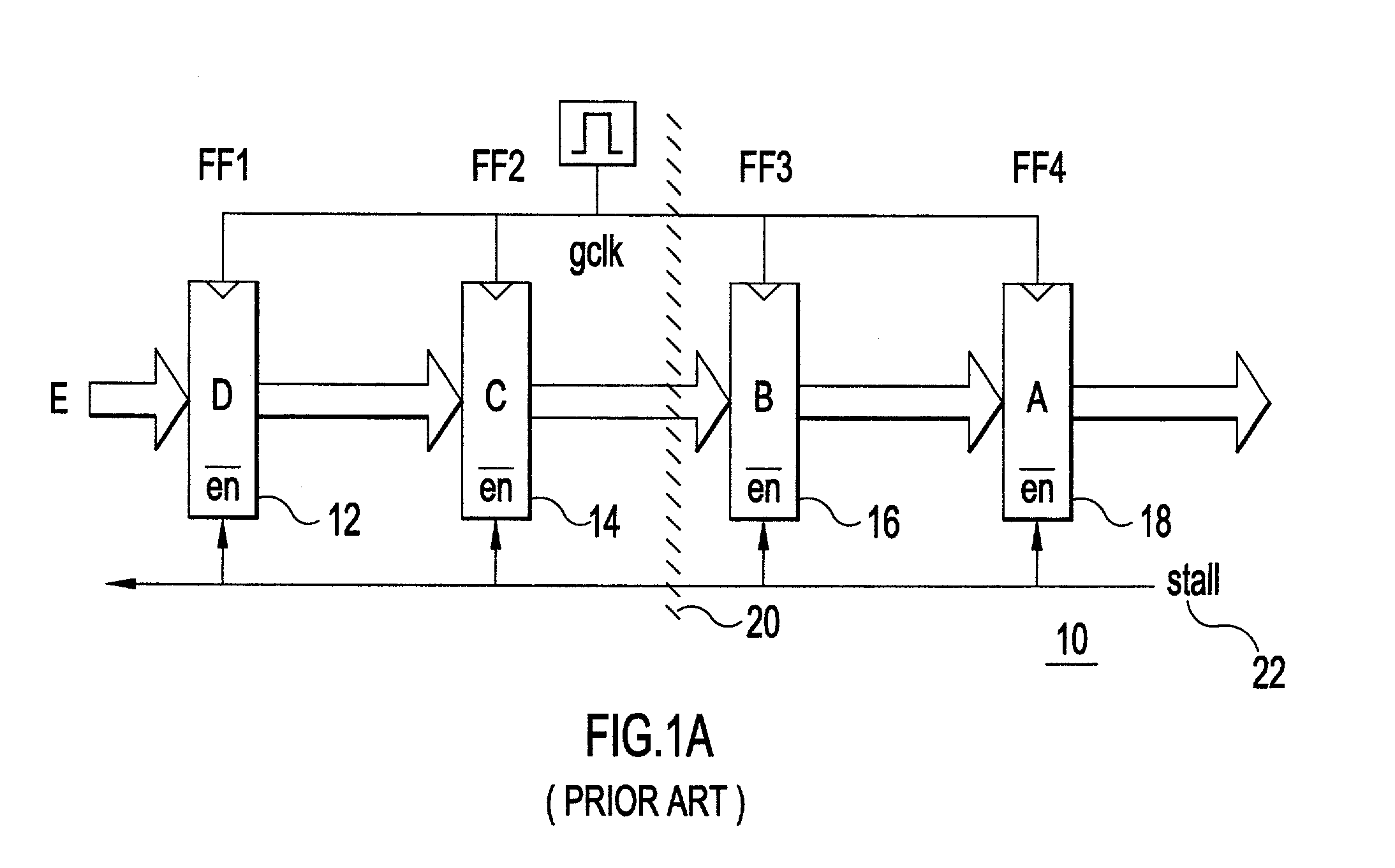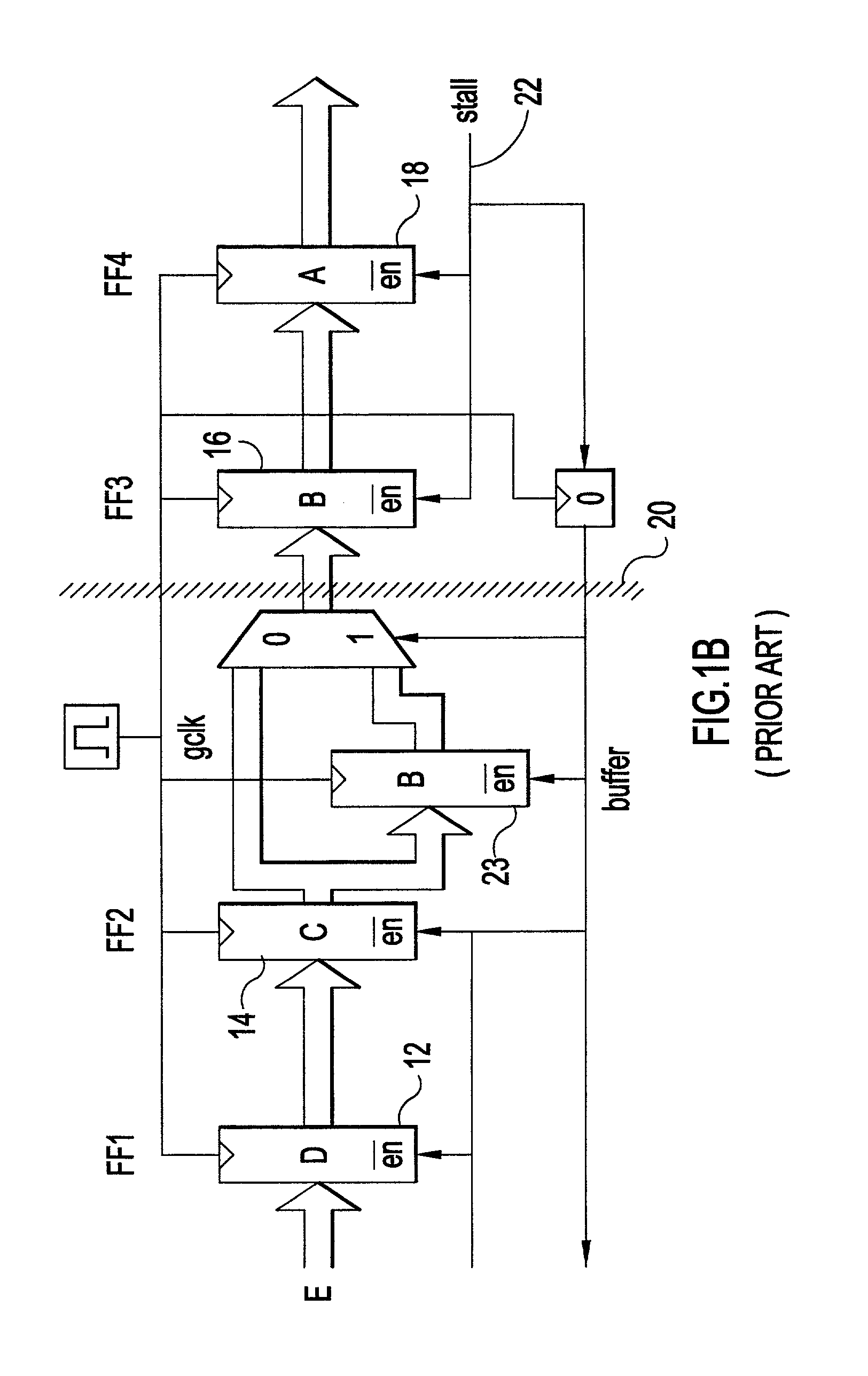Interlocked synchronous pipeline clock gating
a technology of clock gating and interlocking pipelines, applied in the direction of generating/distributing signals, instruments, computations using denominational number representations, etc., can solve the problems of increasing the power dissipation of microprocessors, increasing the power consumption of chips, and increasing the cost of cooling and packaging, so as to increase the effective pipeline storage capacity and increase the storage capacity of queue structures
- Summary
- Abstract
- Description
- Claims
- Application Information
AI Technical Summary
Benefits of technology
Problems solved by technology
Method used
Image
Examples
Embodiment Construction
[0066]A contribution of the present invention is to achieve interlocking between stages in pipelines other than asynchronous pipelines (although the techniques apply also to asynchronous pipelines). FIGS. 2A and 2B illustrate examples of two preferred embodiments. FIG. 2A illustrates an abstract view of an interlocked pipeline 30 where the interlocking handshakes are generated in a distributed fashion by a logic circuit (CCL) 31 and through control / datapath logic (DP / CTL) 32, local to each stage. FIG. 2B illustrates an abstract view of an interlocked pipeline where the interlocking handshakes are generated in a centralized fashion by a common logic circuit 39, such as a state machine. Although not illustrated in FIG. 2B, the common logic circuit 39 may of course be an abstraction of distributed control logic, and may of course receive control and data signals from each pipeline stage and the environment of the pipeline. The register stages (SD) 33 of each stage are triggered by loca...
PUM
 Login to View More
Login to View More Abstract
Description
Claims
Application Information
 Login to View More
Login to View More - R&D
- Intellectual Property
- Life Sciences
- Materials
- Tech Scout
- Unparalleled Data Quality
- Higher Quality Content
- 60% Fewer Hallucinations
Browse by: Latest US Patents, China's latest patents, Technical Efficacy Thesaurus, Application Domain, Technology Topic, Popular Technical Reports.
© 2025 PatSnap. All rights reserved.Legal|Privacy policy|Modern Slavery Act Transparency Statement|Sitemap|About US| Contact US: help@patsnap.com



